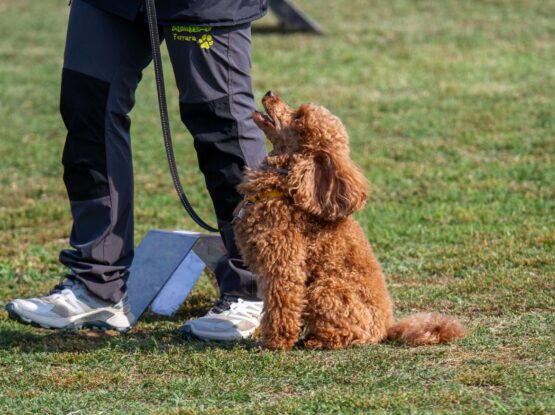Rally obedience and traditional obedience are two popular forms of dog training that focus on improving a dog's behavior and obedience. While both types of training have similarities, they also have several key differences.

Traditional obedience training focuses on teaching dogs specific commands and behaviors, such as "sit," "stay," and "come." The dog is expected to perform these commands on cue, without any distractions or deviations from the expected behavior. The training often involves the use of training aids, such as collars, leashes, and treats, to reinforce good behavior and discourage bad behavior.
On the other hand, rally obedience is a newer form of training that is designed to be more fun and interactive for both the dog and the owner. In rally obedience, the dog and owner work together to navigate a course of signs that outline different behaviors to perform. The course can be set up in a variety of ways, and the behaviors can range from traditional obedience commands to fun tricks and games.
One of the biggest differences between the two types of training is the level of precision required. Traditional obedience training emphasizes the precise execution of specific commands, while rally obedience focuses more on teamwork and enthusiasm. Rally obedience also tends to be less formal than traditional obedience training, with a greater emphasis on having fun and building a strong bond between dog and owner.
Overall, both traditional obedience and rally obedience can be effective ways to train your dog and improve their behavior. The best approach will depend on your individual dog's personality and training needs. However, if you're looking for a more engaging and interactive training experience, rally obedience may be a great choice for you and your furry friend.
